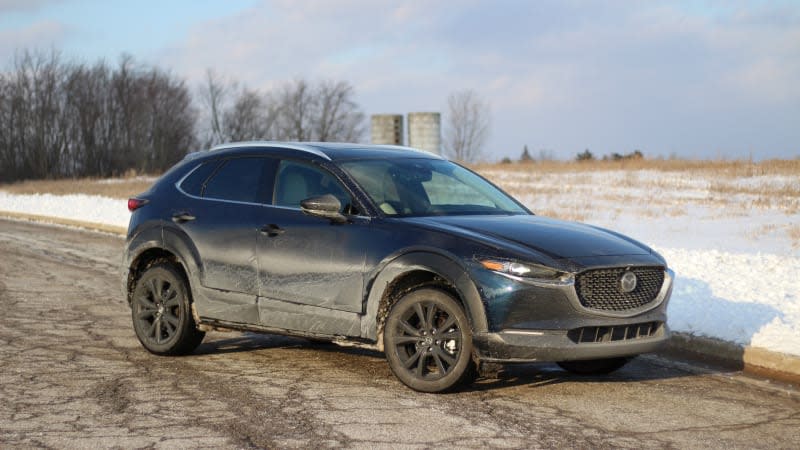2023 Mazda CX-30 Review: Above-and-beyond the mainstream choices
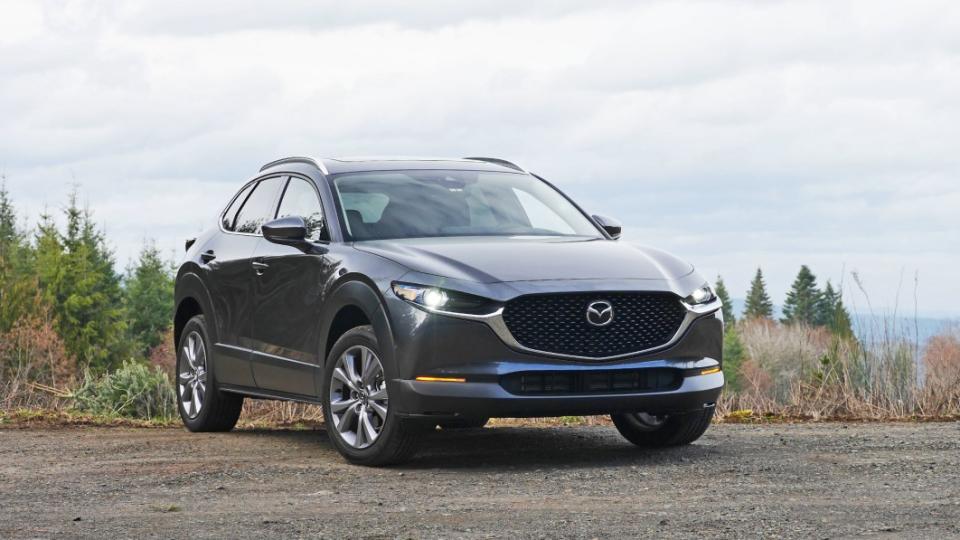
Pros: Fun to drive; wonderful interior; standard all-wheel drive; class-leading turbo power
Cons: Average fuel economy from base engine; expensive relative to mainstream competitors; smartphone integration is only so-so
Mazda’s ongoing push to be an upscale brand is perhaps best exemplified by one of its least-expensive models. The 2023 CX-30 goes above and beyond the typical mainstream midcompact with a segment-busting turbocharged engine, standard all-wheel drive and an interior that belongs in a class above most of Mazda’s traditional competitors.
As impressive as it may be in that context, Mazda’s advantages come at a price — literally. It’s expensive for the segment and a bit shy when it comes to passenger and cargo space; a Kia Seltos or VW Taos would serve you better in that regard. And although it’s based on the traditionally athletic and nimble Mazda3, its AWD and taller profile add mass higher than where you’d ideally want it. Gone are the days of Mazda chasing lap times with its turbocharged Mazdaspeed models, but the CX-30 is nonetheless an excellent driving companion with near-luxury bona fides to boot.
Interior & Technology | Passenger & Cargo Space | Performance & Fuel Economy
What it's like to drive | Pricing & Features | Crash Ratings & Safety Features
What's new for 2023?
In short, not much. The standard 2.5-liter engine was massaged slightly, freeing up an additional 5 horsepower and simultaneously improving fuel economy, albeit slightly. Mazda also made some updates to the CX-30’s safety systems and crash structure that should improve performance for rear passengers. The only bad news is that Mazda quietly discontinued the base turbo trim, so you’ll have to spend a bit more to get that extra power for 2023.
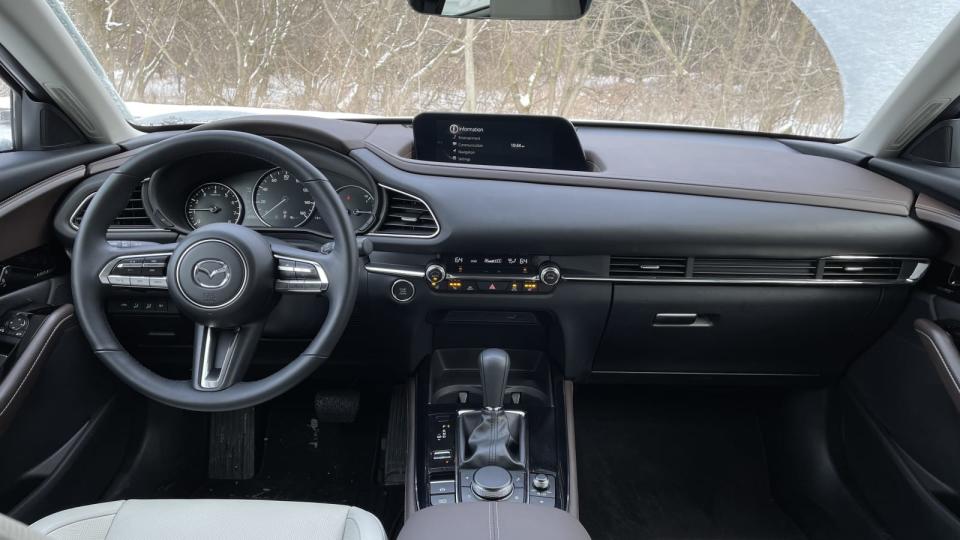
What are the CX-30 interior and in-car technology like?
Like the Mazda3 with which it shares so much, the CX-30's cabin makes you go "wow" considering its price and the vehicles with which it competes. Whatever trim level you're considering, the key to this wow factor is how Mazda's current interior design scheme removes visual clutter by reducing switchgear and effectively hiding air vents and door handles. Lower trim levels are sadly no longer available with two-tone color treatments (we suppose most people just want plain-old black), but upper trims can still get white or black leather accented with reddish brown simulated leather trim. No matter the trim level, though, for a car in the $20,000-$35,000 range, CX-30 interior looks and feels special.
It's also of a high quality and quite functional. The steering wheel, which looks sensational, is an absolute treat to hold and has intelligently designed buttons/switches for the infotainment and cruise controls. There's considerable center console space, including a configurable under-armrest bin, and a decently sized forward bin for a smartphone.
Mazda's tech interface is a bit love-it-or-hate-it. The dashtop screen is large and easy to see. The knob that controls it is large, not unlike BMW's iDrive, and ergonomically placed on the center console. It's not a touchscreen, though, as Mazda engineers determined that hunting for touch-operating icons can be distracting. They're not wrong, and the higher-mounted screen is certainly easier to read at a glance. That said, there are a lot of people who don't not care for this setup and specifically prefer a touchscreen like the ones offered in all the Mazda's competitors. Specifically, the lack of a touchscreen can make it harder to select icons in Apple CarPlay and Android Auto, which were designed to be controlled by touch. There's a reason the Mazda CX-50 now allows touch operation when using CarPlay and Android Auto, but that advancement unfortunately hasn't made it to the CX-30 yet.
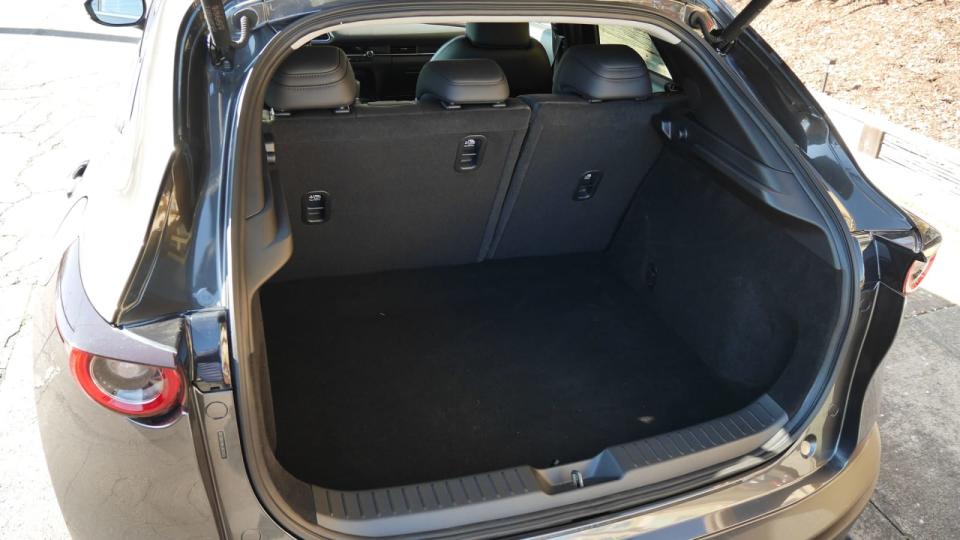
How big is the CX-30?
Although it was originally an unusual size, the CX-30 now finds itself among a growing number of midcompact SUVs that slot in between subcompacts like the Hyundai Kona and compacts like Mazda's own CX-5. Others include the Ford Bronco Sport, Kia Seltos, and Volkswagen Taos. In terms of space, the CX-30 is the smallest of that group and is definitely the least family-friendly. Two tall passengers will be able to sit front-to-back on the passenger side, but not on the driver side. Fitting a rear-facing child seat in the middle will be a squeeze.
Cargo space with the rear seat raised is 20.2 cubic feet, which is only a bit better than subcompact models and considerably less than the midcompacts mentioned above. That number is virtually identical to the Mazda3 hatchback, but in our testing, we found the CX-30's extra height allowed it to swallow an additional suitcase (surprisingly, the Mazda3 sedan can carry more than them both). Although its suitcase count trailed its midcompact competitors, it was superior to a pair of small luxury models, the BMW X2 and Audi Q3. We could also fit a golf bag diagonally across the cargo area.
What are the CX-30 fuel economy and performance specs?
For 2023, every CX-30 comes with all-wheel drive, plus a six-speed automatic. There are then two choices of engine. Cars dubbed CX-30 2.5 S have a naturally aspirated 2.5-liter inline-four that produces 191 horsepower and 186 pound-feet of torque. That's more than the base engines of most competitors, plus some of their engine upgrades. It now returns 26 miles per gallon city, 33 mpg highway and 29 mpg combined. Those figures remain low compared to other base engines, but again, the competition generally has less power.
As for the CX-30's upgrade engine, nothing in the segment can touch it. The turbocharged 2.5-liter inline-four produces 227 hp and 310 lb-ft on regular gas. It'll do 250 hp and 320 lb-ft if you feel like filling it with 93 octane. Fuel economy is basically the same as the base engine at 22/30/25 mpg.
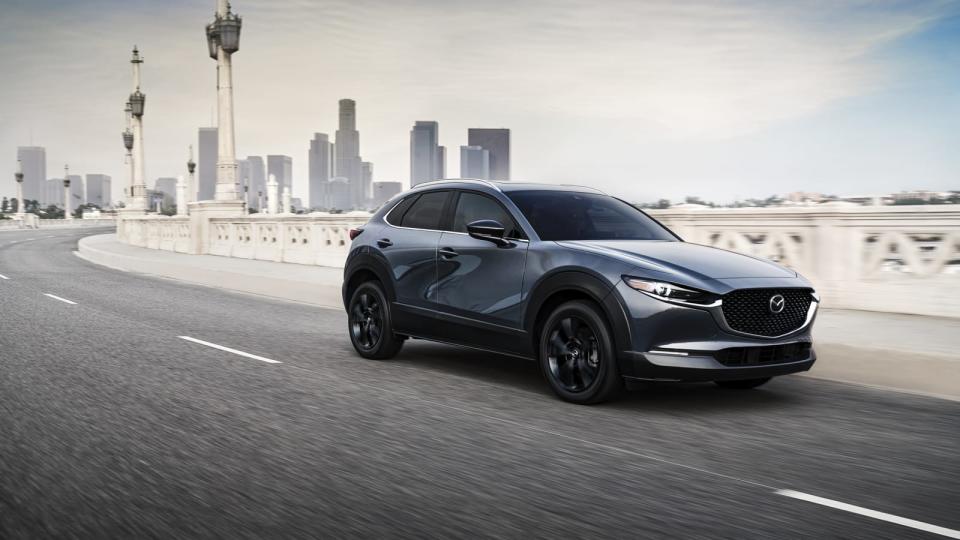

 Yahoo Autos
Yahoo Autos 
